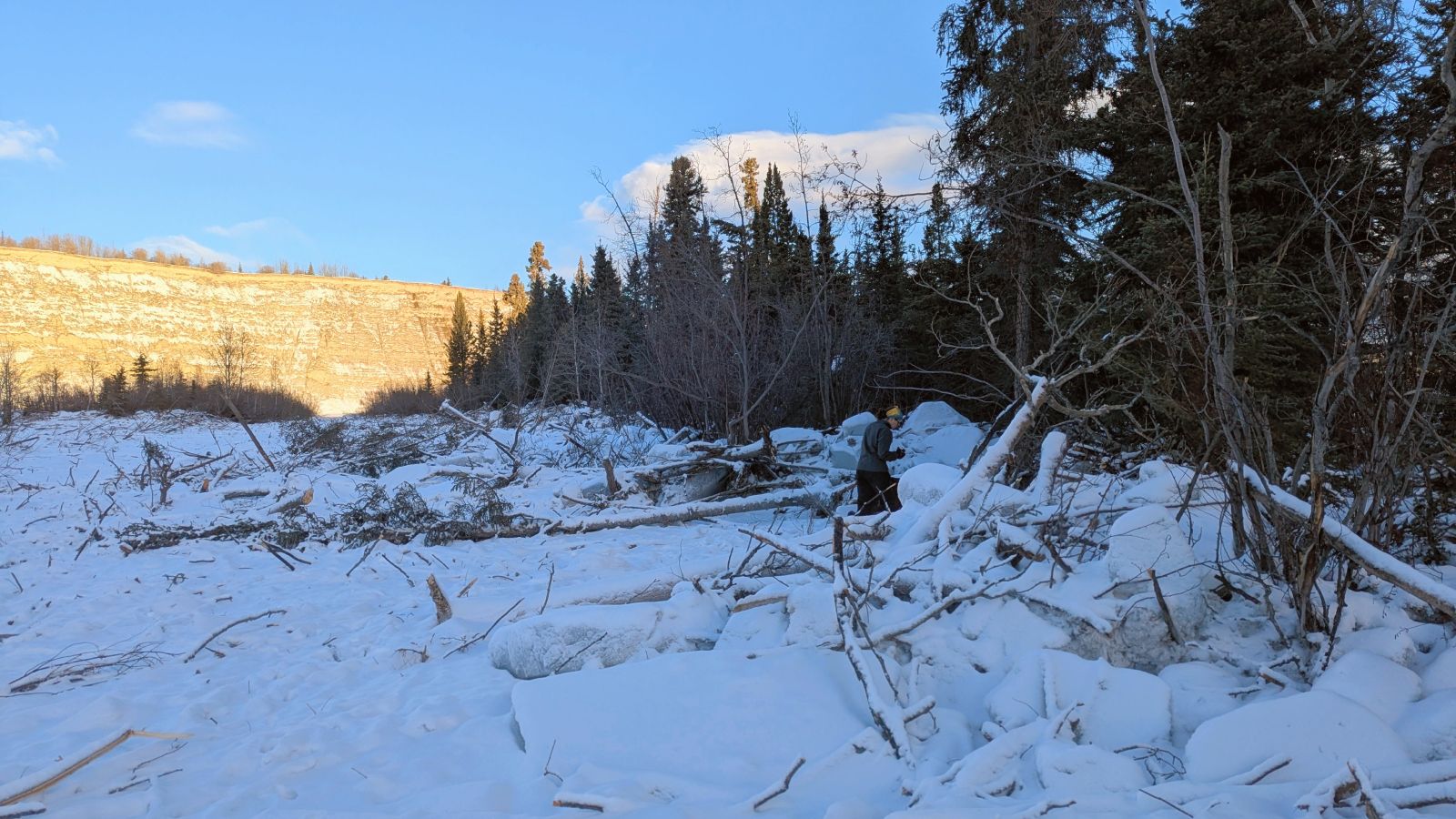A landslide into a river in Canada’s Yukon territory last December sent a tsunami of ice slabs flying over two football fields away, severing trees in the process.
Now, new research suggests that the damage from this “ice tsunami” was worsened by the destructive force of the river ice. However, it was also restricted to a smaller area than if the landslide had hit in summer and created an ice-free wave.
The ice tsunami hit on Dec. 17, 2024, when a steep slope above the Takhini River failed without warning. About 4.1 million cubic feet (118,000 cubic meters) of dirt and rock tumbled into the river, which was covered in ice at the time. The impact created an ice-studded tsunami that washed over 17.8 acres (7.2 hectares) of the river and its banks. River ice cracked up to 820 feet (250 m) away, and chunks of ice over 43 square feet (4 square m) were found 656 feet (200 m) from the landslide.
The icy wave scoured vegetation from the river’s banks, stripping all but the four largest trees from the bank opposite the landslide. On that slope, only trees with trunks of diameters over 11.8 inches (30 centimeters) survived.
Some slabs of river ice were flipped over, with about 4 inches to a foot (10 to 30 cm) of sand stuck to them. These slabs had been frozen solid to the bottom of the river, Cronmiller wrote, and the force of the tsunami ripped the riverbed up with them.
Landslides are typically triggered by snowmelt, rainfall or human activity, but Cronmiller found no evidence of an external trigger for the Dec. 17 event. Instead, the slope underwent a “brittle failure,” meaning it cracked without any signs of warping or deformation.
Fortunately, no one was hurt in the incident, which happened 15.5 miles (25 km) northwest of Whitehorse, Yukon, in a rural area. The river is a destination for outdoor activities, however. Dogsledders and snowmobilers use it as a thoroughfare in winter, while river rafters traverse the Takhini in the summer.
The landslide narrowed the river by 50% and clogged it with debris, which could be hazardous to paddlers for years to come, Cronmiller wrote. The new study found that it will likely take the Takhini River more than a decade to carve its way back through the landslide debris.
